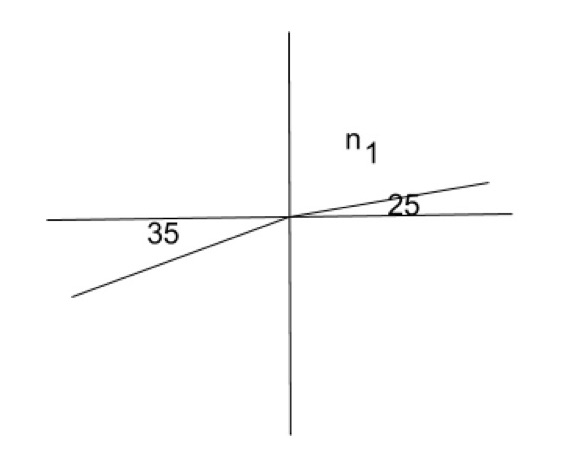All SAT II Physics Resources
Example Questions
Example Question #1 : Snell's Law

Light passes from a medium with some index of refraction 

Snell's law states:
If we substitute the values from the question we get:
Next rearrange to isolate
Example Question #1 : Optics
Which of the following scenarios would result in the polarization of light?
Light is absorbed by a black body
A light source travels at a high velocity
Light pass between two mediums with the same index of refraction
Light passes through a vacuum
Light is reflected off of a glass window
Light is reflected off of a glass window
Light is polarized when it is all oscillating in the same direction. This effect occurs when light is reflected. Polarization can occur through refraction, however if light is passing between mediums with the same index of refraction, the light will not refract.
Example Question #1 : Electromagnetic Spectrum
Of the following, which type of waves has the longest wavelength?
Orange light
X-rays
Gamma rays
Microwaves
Green light
Microwaves
Wavelength and frequency have an inverse relationship; as one value increases, the other value decreases. In contrast, frequency and wave energy have a direct relationship; as one term increases, the other increases as well.
In the electromagnetic spectrum all wave types have the same velocity, but some have greater energy (and frequency) than others. Gamma rays have the highest energy, while radio waves have the lowest. In order from lowest energy to highest, the types of electromagnetic waves are radio waves, microwaves, infrared light, visible light, ultraviolet light, X-rays, and gamma rays.
Of the given answer options, microwaves have the lowest energy. This means they will also have the lowest frequency, and largest wavelength.
All SAT II Physics Resources













